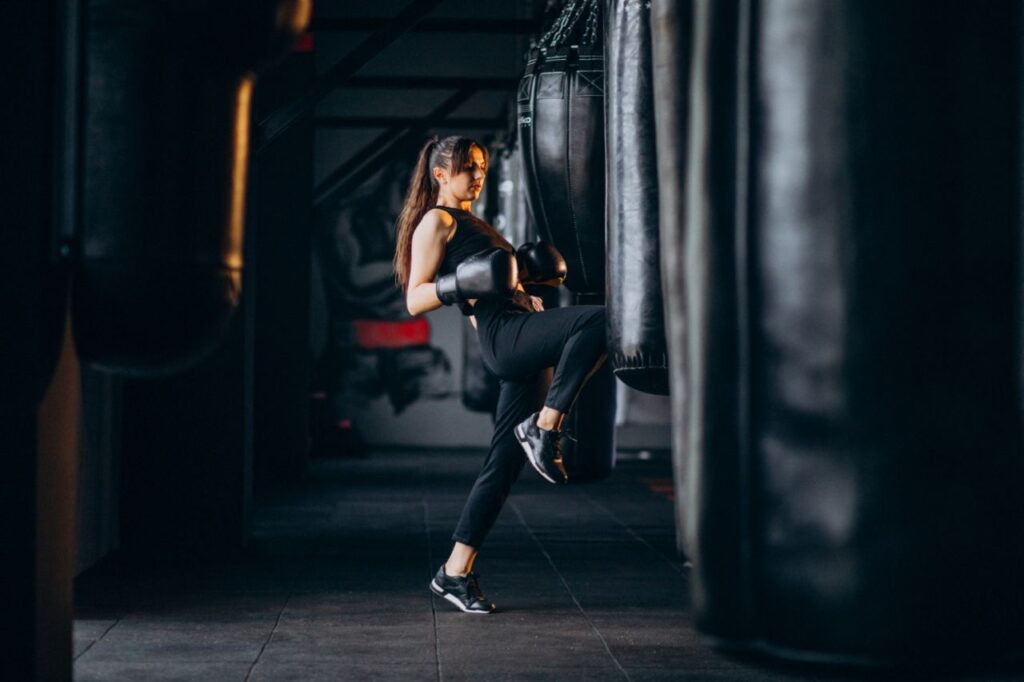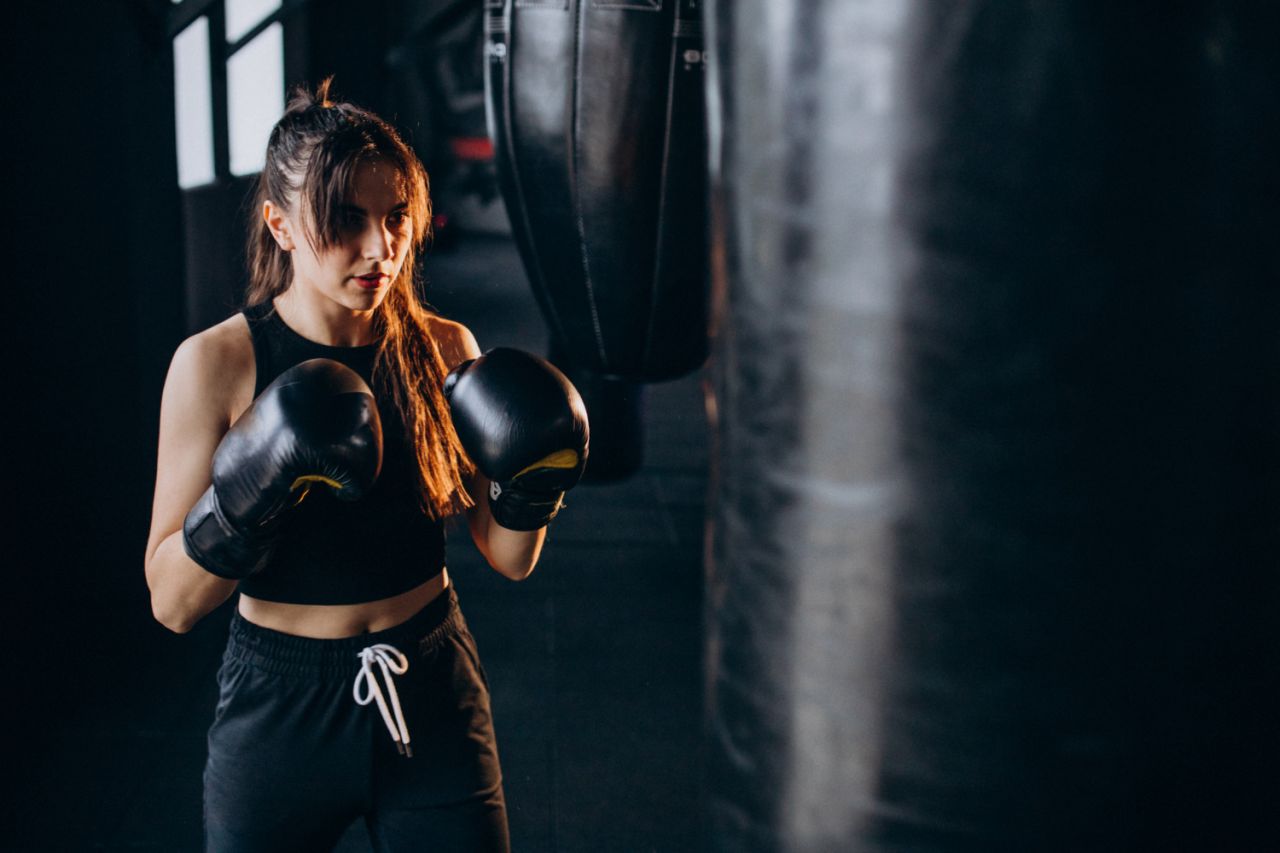If you want to learn how to box, you don't need to go to a boxing gym. You can do most of your training at home with just a few pieces of equipment. In this article, we'll show you how to set up a basic boxing training program at home.
We'll also provide some tips on how to stay motivated and keep progressing in your boxing skills. So whether you're a beginner or an experienced boxer, read on for some helpful advice on training at home!
A Beginner’s Boxing Home Workout
Although it’s been a challenge some days, we’ve all been looking for ways to stay fit during lockdown. Lots of people are eager to get back to the gym, and there are other classes such as Judo, Muay Thai or boxing training Melbourne has on offer here at Senshi.
Staying active is an excellent way to counteract any stress or anxiety you might be feeling and boxing in particular is known to be a great stress-reliever.
Even though we look forward to welcoming our members back to our academy when we can, luckily you can try out boxing from the comfort of our own home. As a beginner, you can even do boxing workouts using just your own bodyweight, no equipment required.
There are many benefits to boxing and other types of martial arts workouts, including sculpting various muscle groups, building strength and burning calories.
If you’re a total beginner, get yourself familiar with the basic moves (we’re talking jab, hook, uppercut and cross). As well as giving yourself with enough space to exercise, pick a pumping playlist and be prepared to sweat.
Warm-up (5-10 minutes):
Start with a full body stretch to prepare your muscles and joints. Our top warm-ups to get you prepped for a boxing workout are: jump rope, jog in place, jumping jacks.
Exercise 1 – Boxer Push-up (10 reps, 2 rounds):
Start in a plank position, core engaged, hands directly below shoulders. Lower body until chest is a few inches above the ground. Press your body up halfway, then lower back down. Press all the way back up to full plank, and that’s one rep.
A modification for if it’s too difficult is to drop your knees to the ground.
Exercise 2 – Double Jab, Cross, Jab, Cover (10 reps per side, 2 rounds):
Stand with your right foot forward, arms in a “guard” position. Throw a double jab with your right arm. Then, throw a left cross punch before repeating a single jab on the right.
Quickly “cover” whilst twisting your upper body and bring your right elbow towards your belly button. Rapidly reverse to the left, and then again to the right. Return to start, and that’s one rep.
Exercise 3 – Boxer Bicycle Crunches (20 reps, 2 rounds):
This is almost exactly like a classic bicycle crunch, except your arms stay in tight in guard position.
Exercise 4 – Jab, Cross, Jab, Bob and Weave (10 reps per side, 2 rounds):
Stand with your right foot forward, arms in a “guard” position. Throw a right jab, followed by a left cross, and then another right jab. Finish this move by bringing your arms back to guard, and then swiftly bob and weave from left to right by lowering your body into a squat.
When in the squat, circle your body from the back to front, as if you were tracing a U shape with your upper body. Return to start and that’s one rep. Switch sides.
Exercise 5 – Jab, Cross, Hook, Bob and Weave (10 reps per side, 2 rounds):
This is exactly like the above exercise, except you swap out the second jab for the hook.
Exercise 6 – Jab, Cross, Uppercut and Cover (10 reps per side, 2 rounds):
The last punch for you to incorporate into this exercise routine is the uppercut. Stand with your right foot forward, arms in guard position.
Throw a right jab, a left cross punch, followed by a right uppercut. Rapidly cover by swinging your upper body and elbows to your left, right and then left again (it helps if you count). Return to start and that’s one rep. Switch sides.
Finisher (5-10 mins):
Jumping rope is also great for your warm down as well as stretches. Try and aim for around the 200 mark. This exercise is not only great for helping your muscles to warm down but can also help you develop your boxing footwork.
Basic Boxing Punches
Now, onto the punches. The three basic ones are:
Jab Punch
This is the lead hand punch thrown straight ahead with your nondominant hand. It’s not a power punch but instead is used to set up other punches.
“When in your boxing stance, it’s the closest hand to your opponent so you will use it the most,”
Cross Punch
The cross is thrown with the rear, dominant hand, which is farthest away from your target. It’s also thrown straight but much more powerfully, using your legs and torso to generate force.
You rarely lead with the cross unless you’re countering an opponent’s punch. Boxers with a good cross include Thomas Hearns, Sergey Kovalev, Deontay Wilder, and Manny Pacquiao.
Hook Punch
These can be done with either hand, but you should focus more on the hook done with the lead (nondominant) hand (hooks done with the other hand can leave you more vulnerable).
Unlike the others, this isn’t a straight punch: Its aim is to come at your target from the side, using your hips and legs for power. “The hook travels out from your shoulder and turns in toward your target halfway through the punch,”
“Don’t let your elbow travel out wider than your shoulder, nice and compact, and return it the same way you throw it.” Boxers with good hooks include Joe Frazier, Felix Trinidad, Oscar de la Hoya, and Mike Tyson.
Once you’ve got the individual punches, you need to put them together. Common combinations include:
- Jab-cross
- Jab-cross-hook
- Jab-jab-cross
- Jab-hook-cross
- Cross-hook-cross
- Hook-cross-hook
- Jab-cross-hook-cross
- Jab-cross-jab-cross-hook-hook
Workout goals
When it comes to boxing there are two main goals we aim for:
- Improving our technique
- Improving our conditioning
We want to improve both of them every time we workout out. Our conditioning is important because no matter how good our boxing skills are, if we can’t box for more then 4-5 rounds, even less skilled boxers will beat us. And the opposite – if we are in a great physical shape but our technique is poor, everyone with a little more skill, experience, and understanding of boxing can outbox us easily.
Conditioning
When it comes to conditioning for boxing, there 3 main things we need to develop:
Explosive power
One of the most important factors of the punching power is not the strength like many people think, but the explosive power. Which basically is the maximum amount of force we are able to generate for a minimum period of time.
If we want to punch harder we need to improve our explosive power. And the best way to do that is by doing exercises for multiple muscle groups, which require fast (explosive) movements.
Those are exercises such as pull-ups, Plyo push-ups, burpees etc, (we will talk about them more in depth later).
Also, if you want to improve your explosive power I don’t recommend doing isolation exercises (such as biceps and triceps curls, bench press and all these exercises that bodybuilders do).
They may help you build more muscle mass, but won’t make you punch harder. Too much muscle mass will slow you down, make your movements stiffer which will decrease your punching power rather than increasing it.
Cardio
The lack of cardio can break a boxer. That’s why the pro boxers focus so much on their cardio when they are preparing for a fight. In this article, we will talk about the right way to work on your cardio because there are some things that can go wrong when trying to improve it.
For example, many people think that you need to do slow pace, long distance “marathons” if you want to increase your cardio for boxing. But that actually can’t be further from the truth.
That’s because boxing is about explosive power. And that type of cardio exercises – the slow pace-long distance one, is improving your endurance but meanwhile is REDUCING your explosive power.
So instead of the so-called “marathons”, is much better for you to do intervals of sprints. That way you will work on your cardio but also on your explosive power. You can see the difference if you look at pictures of a marathon runner and a sprinter. It’s obvious who is the more explosive athlete.
Overall strength and body conditioning
For boxing, there are certain muscles which are more important than the others. That’s the leg muscles (from where the power comes), the core muscles, the back and shoulders, and the arm muscles. So it’s a good idea to train them.
Also, we need to train our nervous system to be prepared for the shock caused by the punches. Our core and our knuckles are the parts of the body that will take the most punishment while fighting, so we need to condition them properly.
Technique
Here are the main things we should focus on when trying to improve our boxing technique:
Punching (coordination, distance judgment, and combinations)
In order to punch hard, you need to generate power through your whole body, not just from the arm. The rotation of the feet, the hips, and the spine is what actually makes a punch powerful.
But if you’re a beginner, chances are it will be hard for you to execute the proper technique. That’s why we are going to work on the coordination of your whole body.
Through repetition, you will develop muscle memory and you will be able to punch faster, harder, more accurate, and you will know how to throw the best boxing combinations without even thinking about it.
Also, it’s important to improve your distance judgment.
It may look easy when you see how other boxers do it, but sometimes it’s actually hard to judge the distance so you can land a powerful but also precise shot during a fight when your opponent is constantly moving.
Footwork
Some boxers will tell you that footwork wins fights. And that’s actually true. You can’t punch somebody before first stepping into the right distance and you can’t defend yourself effectively if your footwork isn’t on point.
When your opponent attacks you can’t just cover yourself up, you need to move back or to pivot, to get yourself out of the bad situation.
In this article, I will show you the best boxing footwork drills for beginners for improving not only your mobility but also your balance. Because without good balance it’s easier for your opponent to knock you down even with a simple push.
The balance is also important when it comes to throwing hard shots (remember that the power comes from the feet).
Defense
There are many ways to defend a punch in boxing. The easiest way is just to block it with your glove. But you can also use footwork to dodge the shot – to move away from it, to slip it or to parry it. Those are more advanced skills, but in a minute we’ll get into the best drills for slipping punches, for bobbing and weaving and blocking.
Also, we are going to train counter punching. Because you can’t win a fight only by defending punches, you need to fire back. And the counter punching is the best way to do it. It simply means to land a shot right after you made our opponent miss by slipping, blocking or parrying his punch.
Tips:
You can absolutely do some of the exercises in your home without any equipment or a sparring partner. And that will improve your skills significantly after just a few weeks. But if you want to get the maximum of it, We recommend training in a gym or with a sparring partner or at least using some basic equipment like a heavy bag, gloves, wraps etc.
Because the person who spars, and works on the heavy bag, double end bag 10 of 10 times will be better prepared from someone who is just shadowboxing and doing conditioning exercises.
You’ll see gear recommendations after some of the exercises in this article. Those some of the best gloves, wraps and other pieces of equipment I have ever used so feel free to check them out.
Don’t go to your max every day when training. Go to 70-80% of your max. Focus on volume, not on intensity. That way you won’t feel sore and you’ll be able to work out almost every day.
Conclusion
So, if you are looking to get started boxing and don’t have access to a gym, or want to supplement your training, give this beginner boxing home workout a try. It will help you build strength, improve coordination, and burn calories.
Be sure to warm up properly before starting any workout and cool down afterwards.
And as always, consult with a doctor before beginning any new exercise routine. How has your experience been following this beginner boxing home workout?
- Find a gym. Boxing gyms aren't typically found in the yellow pages, but there are resources on the internet that can lead you in the right direction. ...
- Be sure the gym is within striking distance. ...
- Be open-minded. ...
- Choose your coach carefully. ...
- Do judge the gym by its cover.
So, can boxing be self-taught? Boxing can be self-taught but it's not the quickest and most effective way to become better at the sport because you aren't able to tap into the knowledge of a boxing coach who would be able to help you one to one.
Best Age to Start
Specialists in sports medicine believe that boxing classes are better to start from 9-10 years. Starting too early could result in putting the student off, as boxing is hard work and not always as fun as team sports, such as football or rugby.



